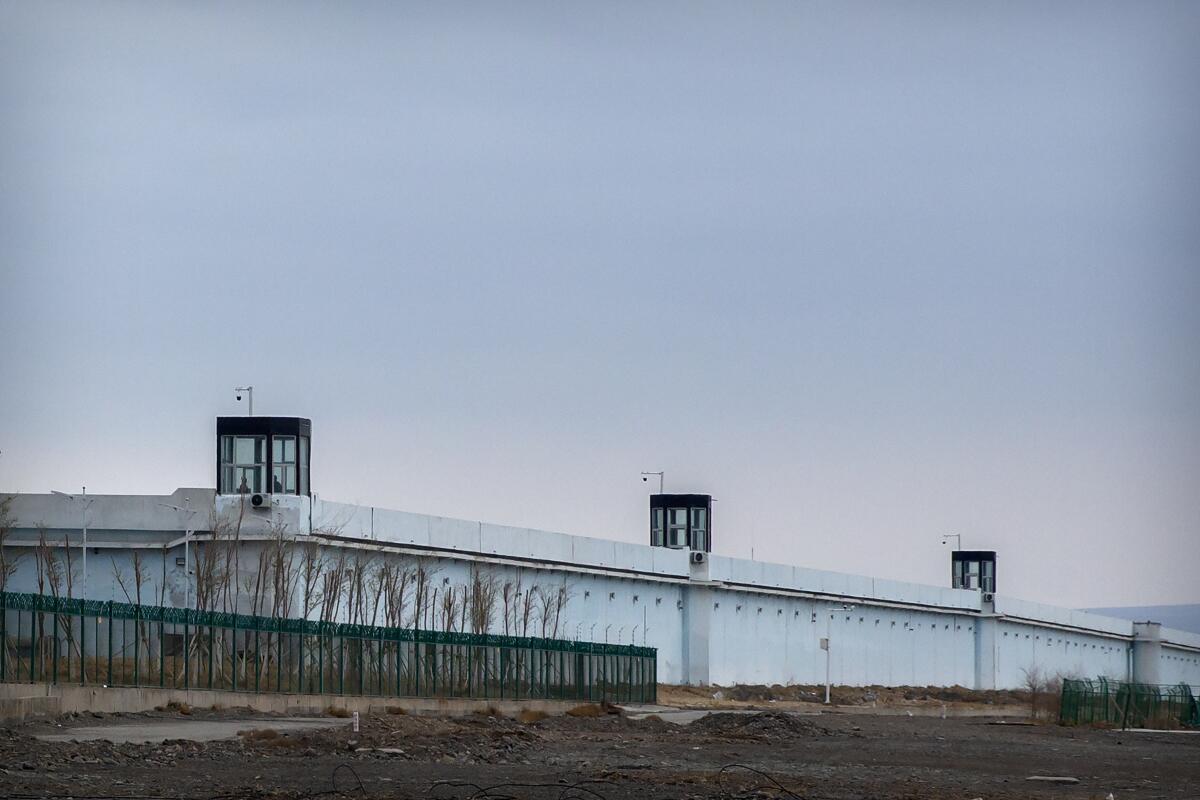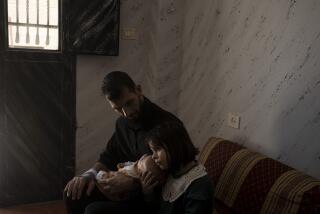Room for 10,000: Inside China’s largest detention center

DABANCHENG, China — The Uyghur inmates sat in uniform rows with their legs crossed in lotus position and their backs ramrod straight, numbered and tagged, gazing at a television playing grainy black-and-white images of Chinese Communist Party history.
This is one of an estimated 240 cells in just one section of Urumqi No. 3 Detention Center in Dabancheng, seen by Associated Press journalists granted extraordinary access during a state-led tour to China’s far west Xinjiang region. The detention center is the largest in the country and possibly the world, with a complex that sprawls over 220 acres — making it twice as large as Vatican City. A sign at the front identified it as a “kanshousuo,” a pretrial detention facility.
Chinese officials declined to say how many inmates were there, saying the number varied. But the AP estimated the center could hold roughly 10,000 people, based on satellite imagery and the cells and benches seen during the tour, and many more if crowded. The AP was the first Western media organization allowed in.
This site suggests that China still holds and plans to hold vast numbers of Uyghurs and other mostly Muslim minorities in detention. Satellite imagery shows that new buildings stretching almost a mile long were added to the Dabancheng detention facility in 2019.
China has described its sweeping lockup of a million or more minorities over the past four years as a “war against terror,” after a series of knifings and bombings by a small number of extremist Uyghurs. Among its most controversial aspects were the so-called vocational “training centers” — described by former detainees as brutal internment camps.
Under heavy international criticism, China said in 2019 that all the occupants had “graduated.” But the AP’s visit to Dabancheng, satellite imagery and interviews with experts and former detainees suggest that while many “training centers” were indeed closed, some like this one were simply converted into prisons or pretrial detention facilities. Many new facilities have also been built, including a new 85-acre detention center down the road from No. 3 in Dabancheng that went up over 2019, satellite imagery shows.
The changes seem to be an attempt to move from the makeshift and extrajudicial “training centers” into a more permanent system of prisons and pretrial detention facilities justified under the law. While some Uyghurs have been released, others have simply been moved into this prison network.
However, researchers say innocent people were often thrown in detention for things like going abroad or attending religious gatherings. Darren Byler, an anthropologist studying the Uyghurs at the University of Colorado, noted that many prisoners have not committed “real crimes by any standards,” and that they go through a “show” trial without due process.
“We’re moving from a police state to a mass incarceration state. Hundreds of thousands of people have disappeared from the population,” said Byler. “It’s the criminalization of normal behavior.”
During the April tour of No. 3 in Dabancheng, officials repeatedly distanced it from the “training centers” that Beijing claims to have closed.
“There was no connection between our detention center and the training centers,” insisted Urumqi Public Security Bureau director Zhao Zhongwei.
However, despite the claims of officials, the evidence shows No. 3 was indeed an internment camp. A Reuters picture of the entrance in September 2018 shows that the facility used to be called the “Urumqi Vocational Skills Education and Training Center.” Records also show that Chinese conglomerate Hengfeng Information Technology won an $11-million contract for outfitting the “Urumqi training center.”
A former construction contractor who visited the Dabancheng facility in 2018 told the AP that it was the same as the “Urumqi Vocational Skills Education and Training Center,” and had been converted to a detention facility in 2019, with the nameplate switched. He declined to be named for fear of retaliation against his family.
The vast complex is ringed by 25-feet-tall concrete walls painted blue, watchtowers, and humming electric wire. Officials led AP journalists past face-scanning turnstiles and rifle-toting guards in military camouflage.
In one corner of the compound, Zhu Hongbin, the center’s director, rapped on a cell window.
“They’re totally unbreakable,” he said, his voice muffled beneath head-to-toe medical gear.
At the control room, staff gazed at a wall-to-wall, God’s-eye display of some two dozen screens streaming footage from each cell. Another panel played programming from state broadcaster CCTV, which Zhu said was being shown to the inmates.
“We control what they watch,” Zhu said. “We can see if they’re breaking regulations, or if they might hurt or kill themselves.”
The center also screens video classes, Zhu said, to teach them about their crimes.
Twenty-two rooms with chairs and computers allow inmates to chat with lawyers, relatives, and police via video, as they are strapped to their seats. Down the corridor, an office houses a branch of the Urumqi prosecutor’s office, in another sign of the switch to a formal prison system.
A nearby medical room contains a gurney, a tank of oxygen and a cabinet stocked with medicine. Guidelines hanging on the wall instruct staff on the proper protocol to deal with sick inmates — and also to force-feed inmates on hunger strikes by inserting tubes up their noses.
Zhao, the other official, said inmates are held for 15 days to a year before trial depending on their suspected crime.
Urumqi No. 3 Detention Center is comparable in size to Rikers Island in New York City, but the region serves less than 4 million people compared with nearly 20 million for Rikers. At least three other detention centers are sprinkled across Urumqi, along with 10 or more prisons.
The No. 3 center did not appear to be at full capacity; one section was closed, officials said, and the six to 10 inmates in each cell took up only half the benches. But the latest official government statistics available, for 2019, show that there were about twice as many arrests in Xinjiang that year than before the crackdown started in 2017. Hundreds of thousands have been sentenced to prison on what relatives often claim are spurious charges.
More to Read
Sign up for Essential California
The most important California stories and recommendations in your inbox every morning.
You may occasionally receive promotional content from the Los Angeles Times.










